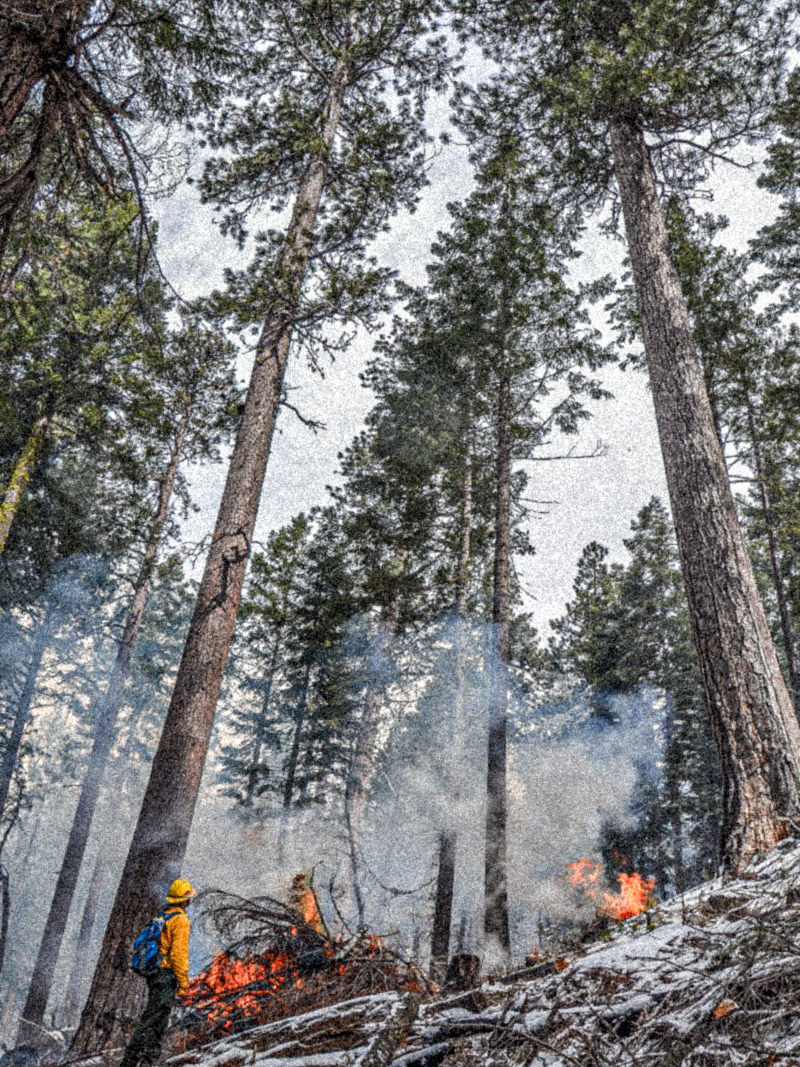ASHLAND FOREST RESILIENCY PROJECT
Ashland, OR, USA
Lomakatsi Restoration Project
The Ashland Forest Resiliency Stewardship Project is an ongoing collaboration since 2010 between the Lomakatsi Restoration Project, the City of Ashland, The Nature Conservancy and the United States Forest Service. The project covers 7,600 acres of land to support, preserve and restore wildlife habitat, water quality and a healthy forest ecosystem. While the primary objectives of the project is to reduce the risk of large-scale wildfire and helping large, old trees survive fire, insects and disease, there are also initiatives to ensure that watershed values, from human life and property, older forests, abundant, clean drinking water, wildlife habitat and ecological sustainability. Fire was suppressed for over a century across the Ashland watershed, during which time young Douglas fir and white firs have grown and shaded groundcover, killing older trees and fueling wildfires that climb like ladders to tree canopy. The Lomakatsi Restoration Project is a group of ecologists and who have worked to facilitate partnerships and build community across landscape scale restoration projects, all of which are community-based and include intensive meetings. The Ashland Forest Resiliency Project has used ecological thinning across the watershed, as well as a management strategy that limits camping and campfires year-round to protect our watershed and community. The project uses processes of yarding, both in helicopters and ground-based management, and highlights the challenges of bringing heavy machinery into the forest on existing roadways and ensuring that slopes do not erode during rainfall. Controlled burns are being introduced with required safety precautions to consume leaf litter, leaves and branches.
2010 - ongoing
7600 acres
1900 feet above sea level
2010 - ongoing
7600 acres
1900 feet above sea level

tags: soil stabilization, protect, sequestration, resilience, ecological, community, NGO-driven, government-driven, masterplan, training program, communication, wildfire, soil infertility, deforestation, habitat loss, indigenous rights, landscape metrics, environmental justice, Shasta, North America, Nearctic, Taiga
References:
Shannon, Kelly and Danielle Kaufman. “California is Burning: Rethinking the Wildland/(Sub)urban Interface.” Landezine. January 9, 2018. http://landezine.com/index.php/2018/01/california-is-burning-rethinking-the-wildland-suburban-interface/
Schuler, Timothy A. “Taking the Wind out of Wildfire.” Landscape Architecture Magazine (March 2019): 96-105.
Gillison, Lindsey, Cathy Whitlock and Glynis Humphrey. “Resilience and fire management in the Anthropocene.” Ecology and Society 24, no. 3 (2019):14.
Davis, Emily and Eric M. White. "Collaboration and stewardship authority: the Ashland Forest Resiliency Project." 2015. https://scholarsbank.uoregon.edu/xmlui/handle/1794/19626
Links:
https://www.ashland.or.us/Sectionindex.asp?SectionID=503
https://lomakatsi.org/ashland-forest-resilency-project/
https://afrblog.org/
https://www.southernoregonmagazine.com/the-ashland-forest-resiliency-stewardship-project